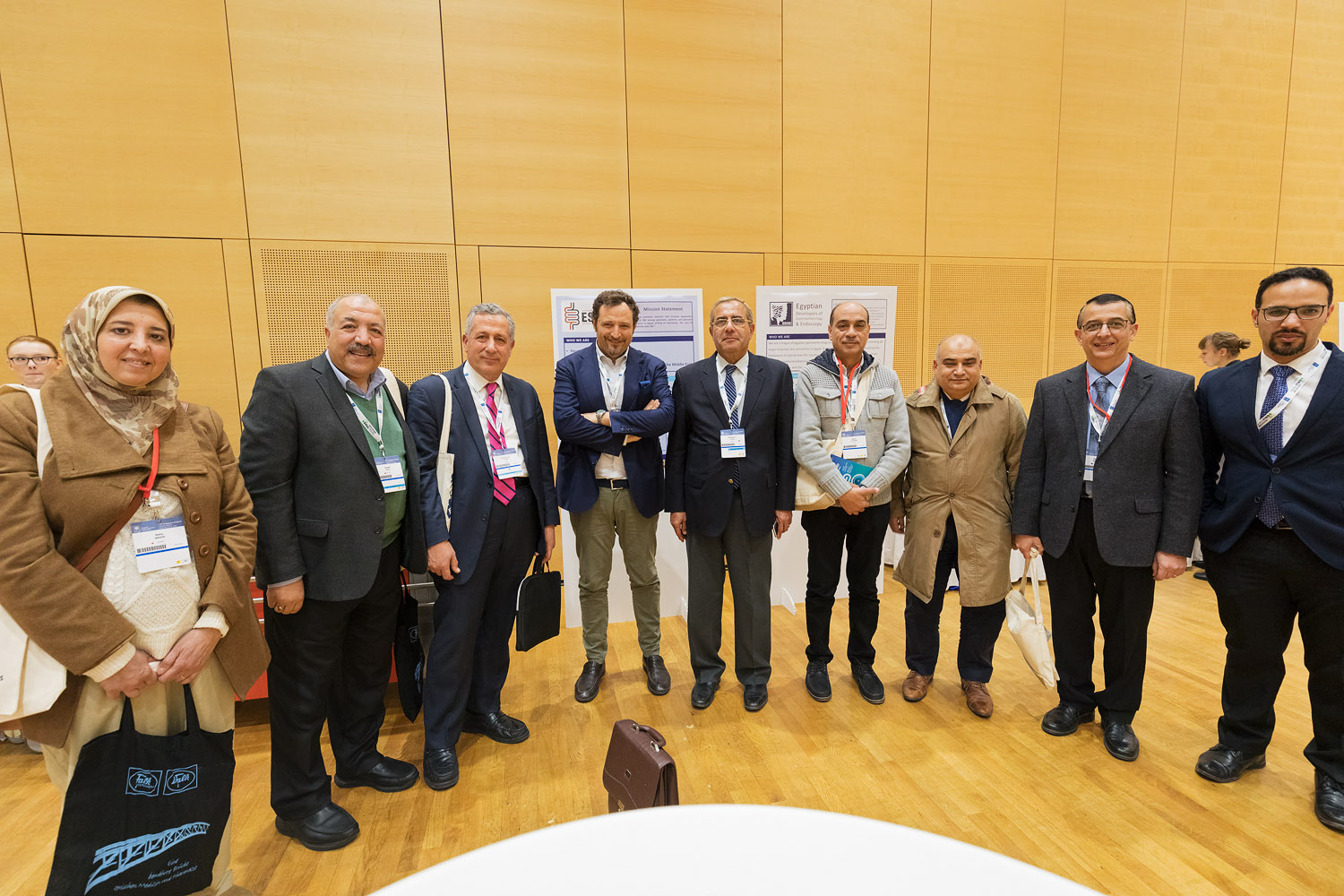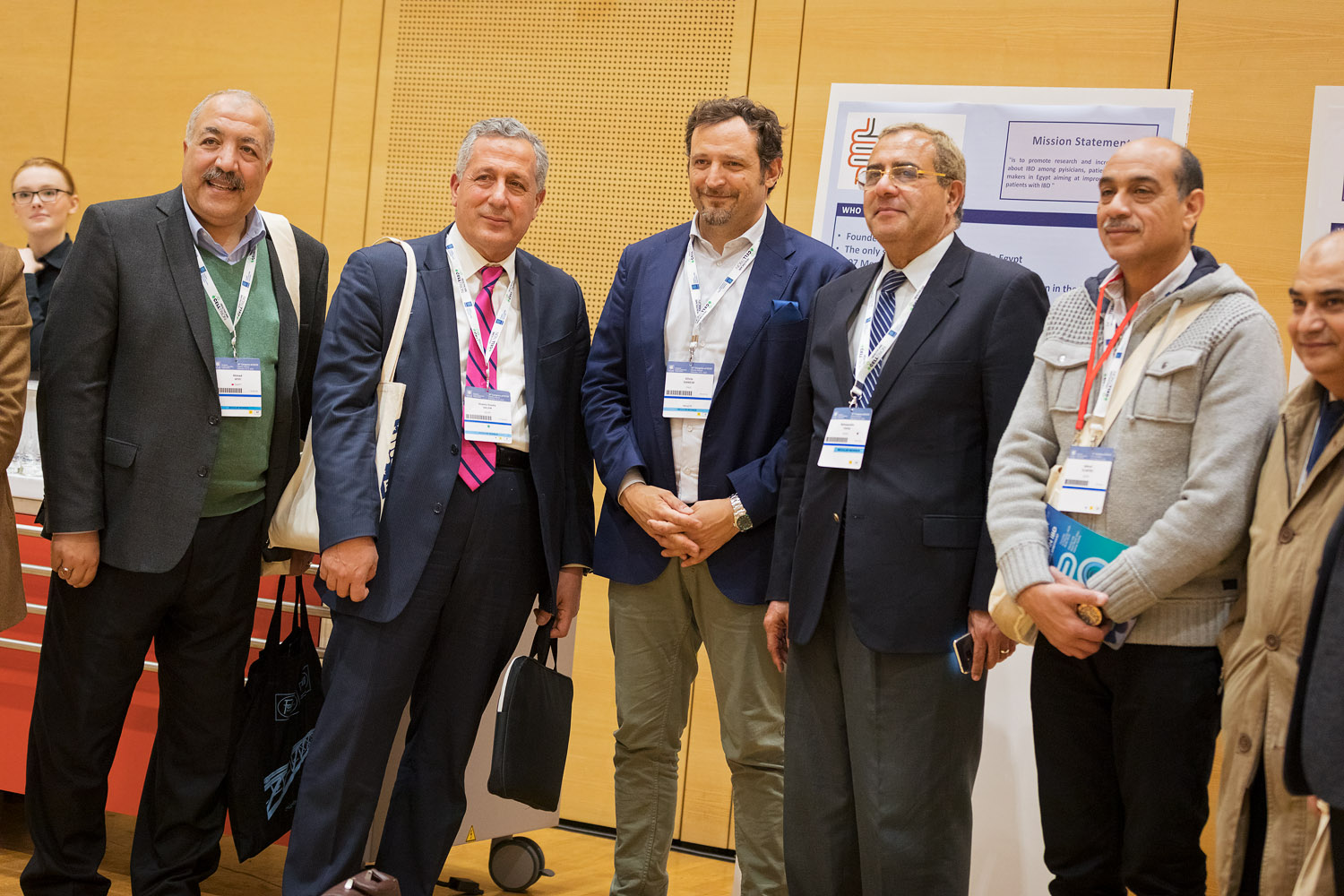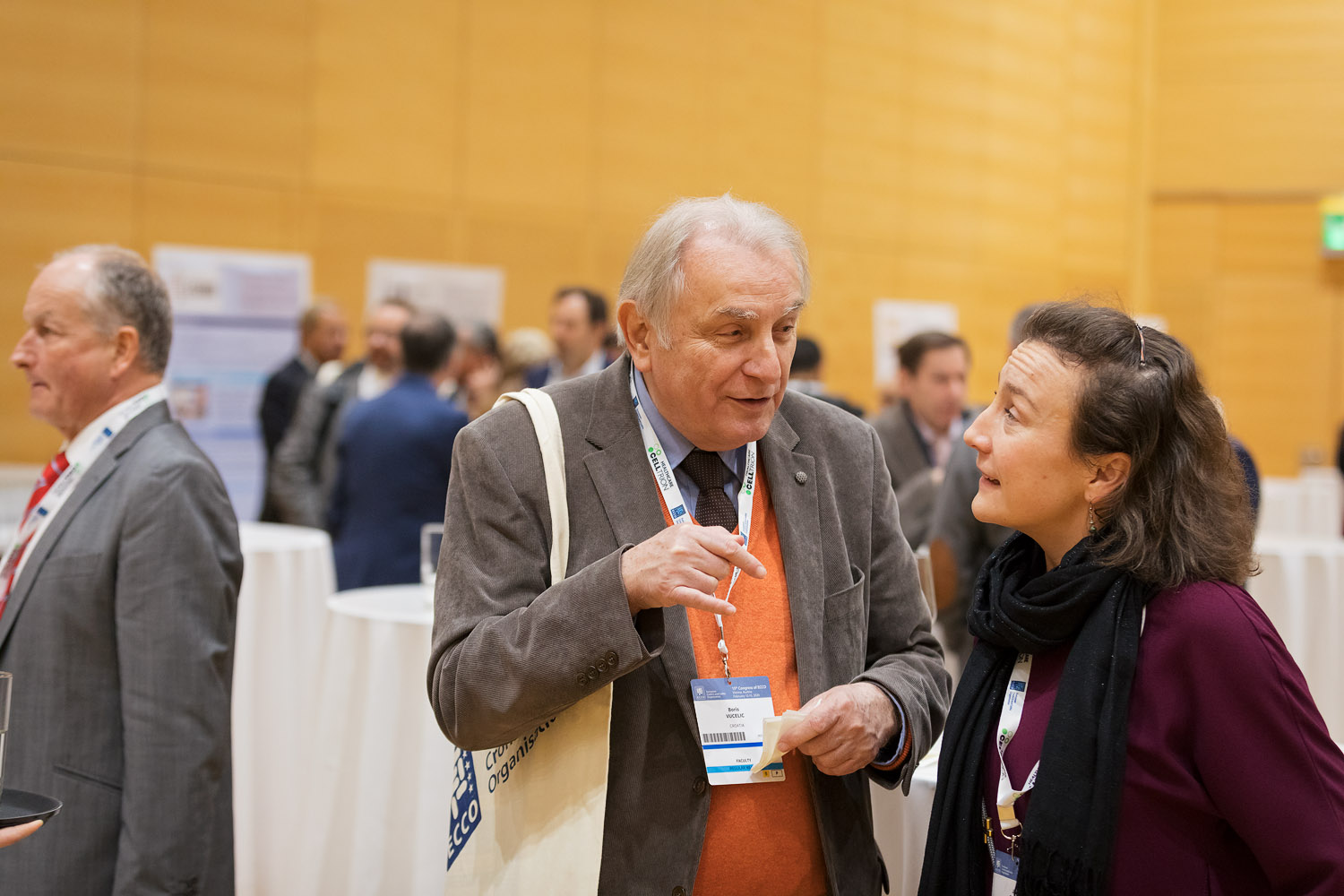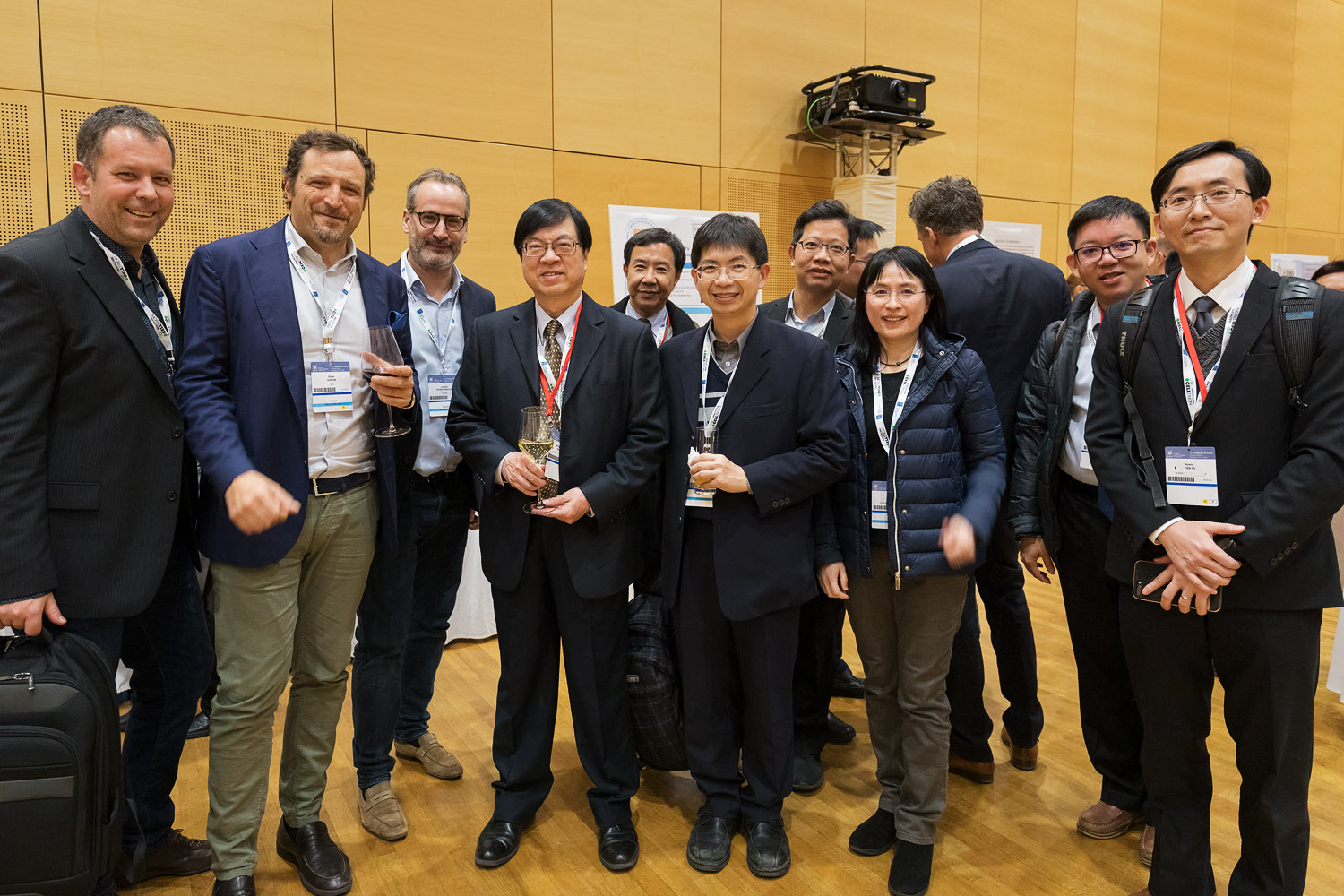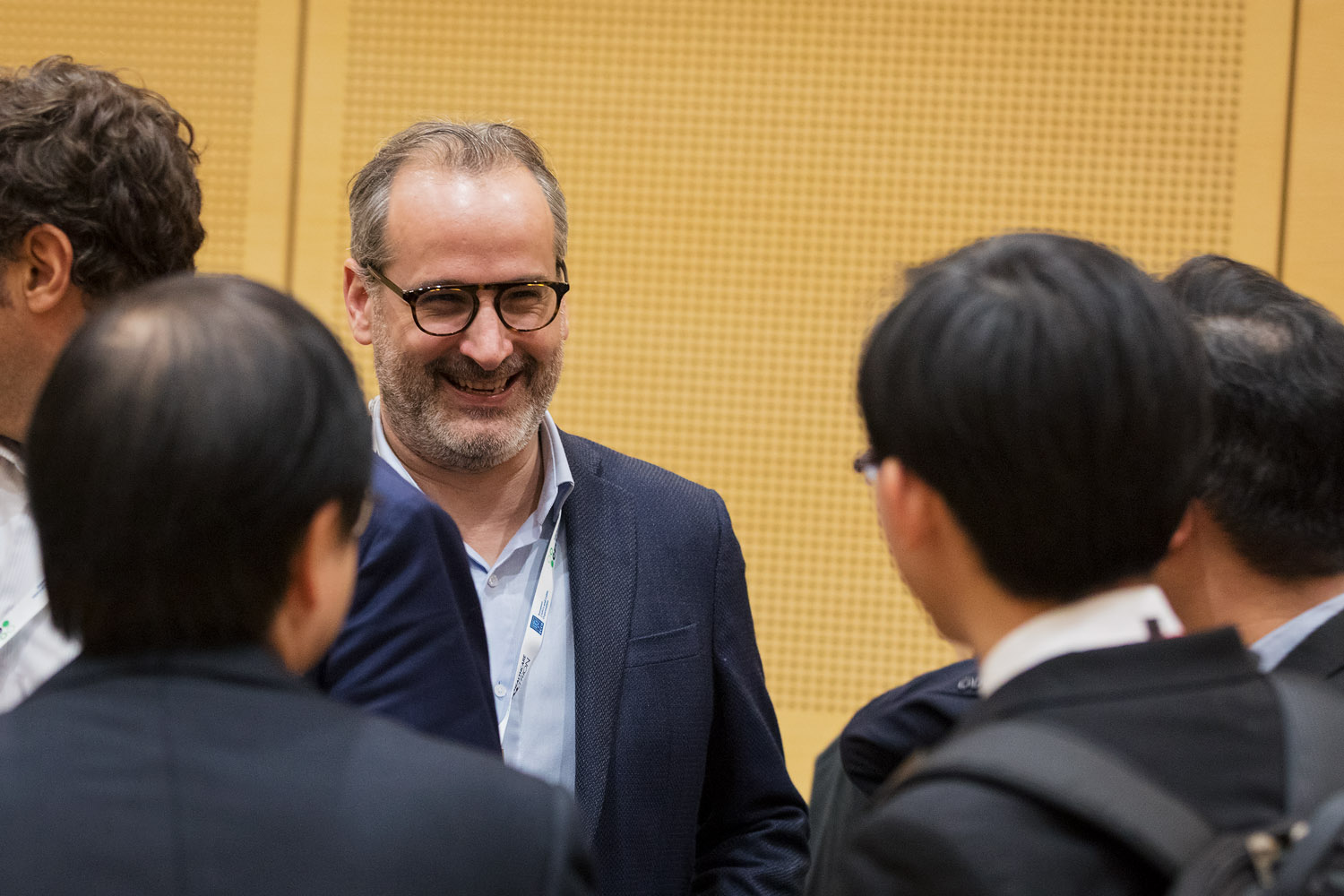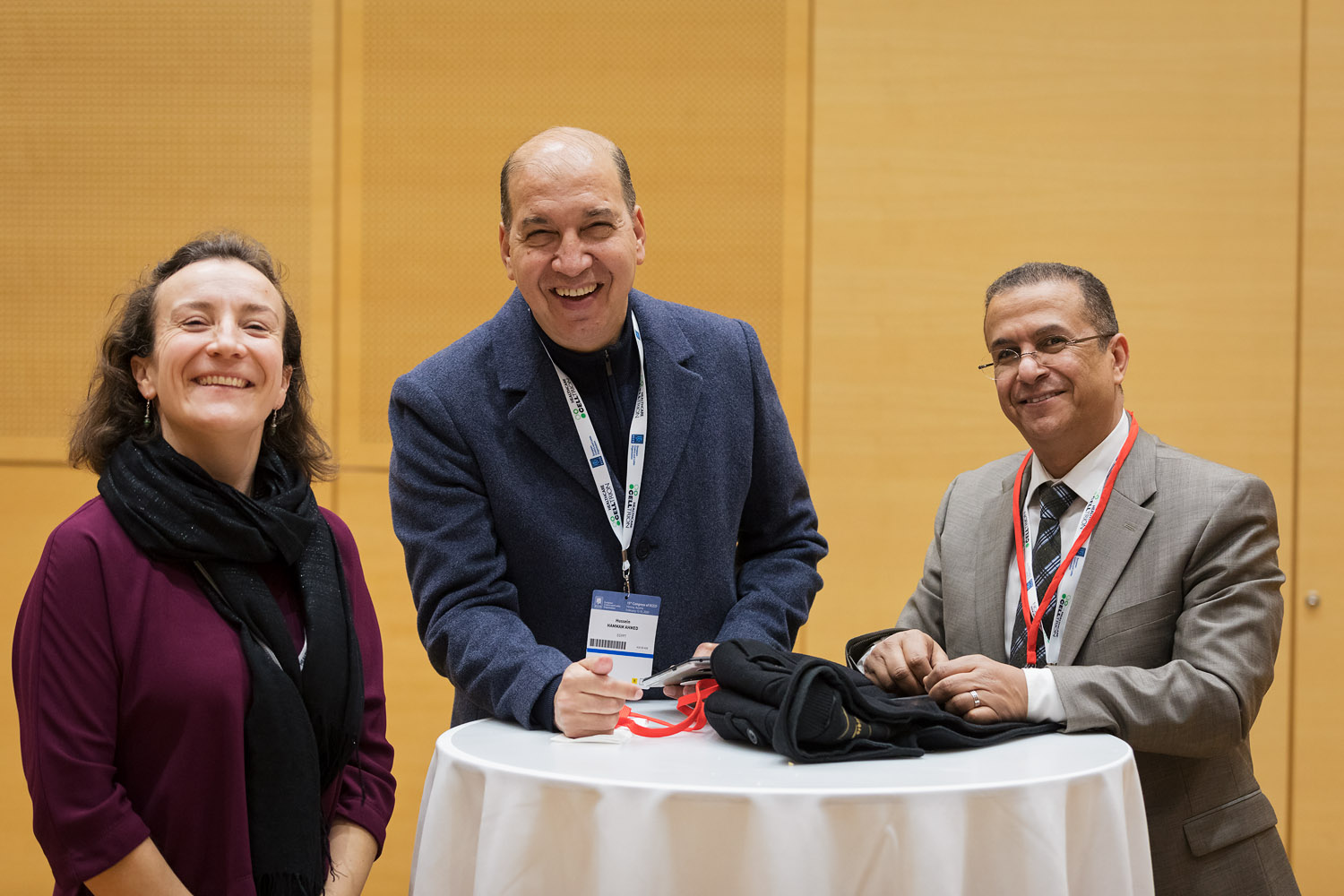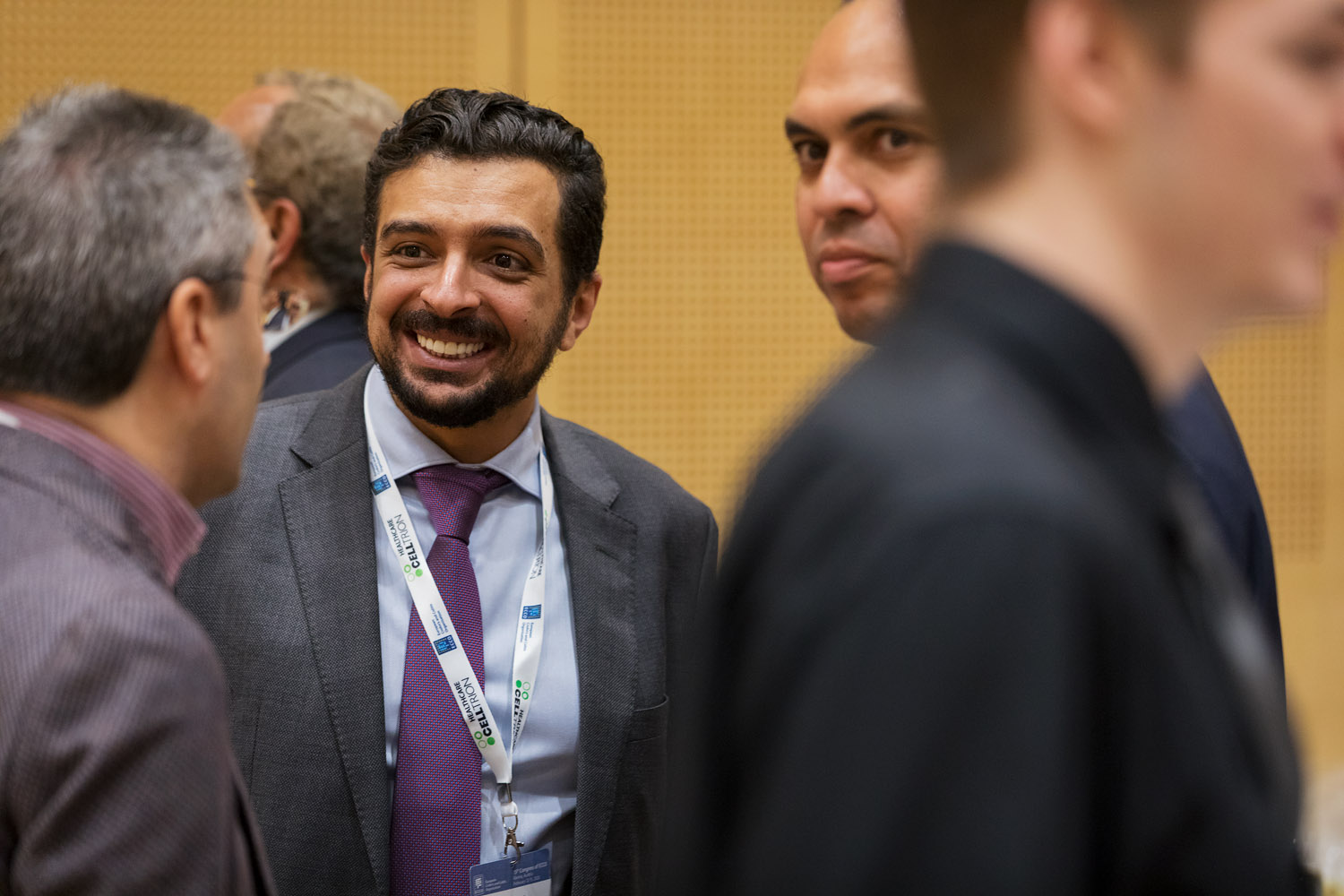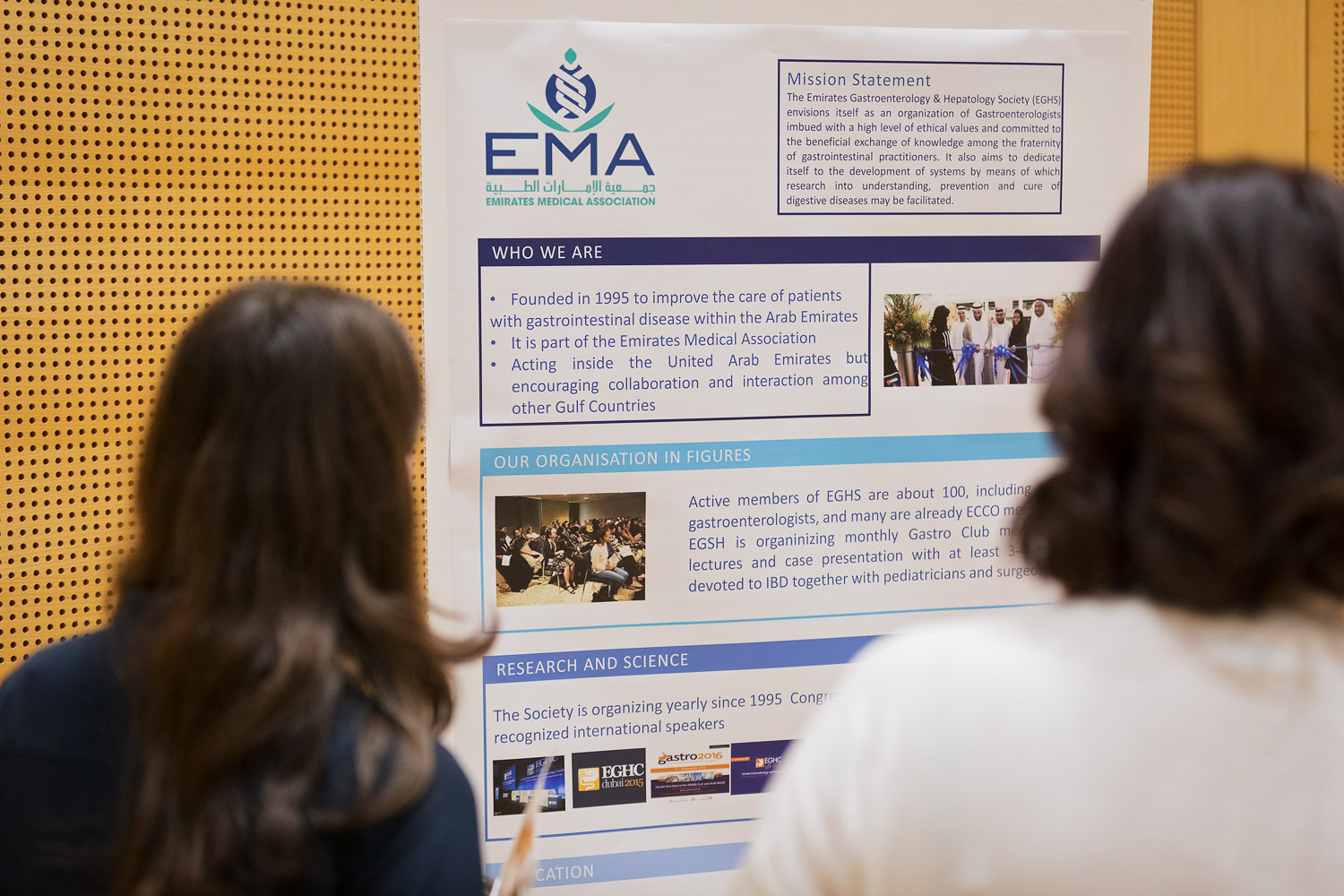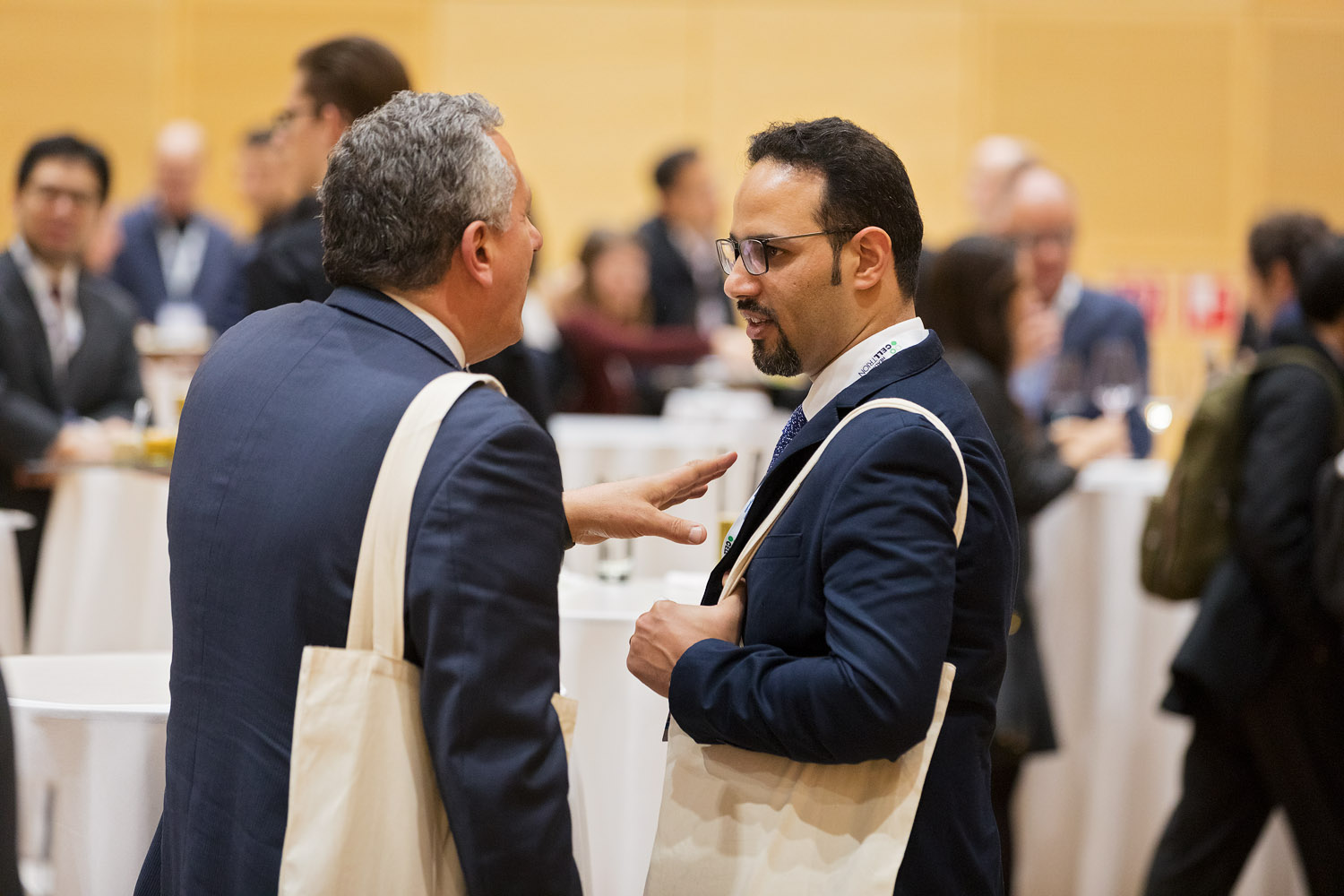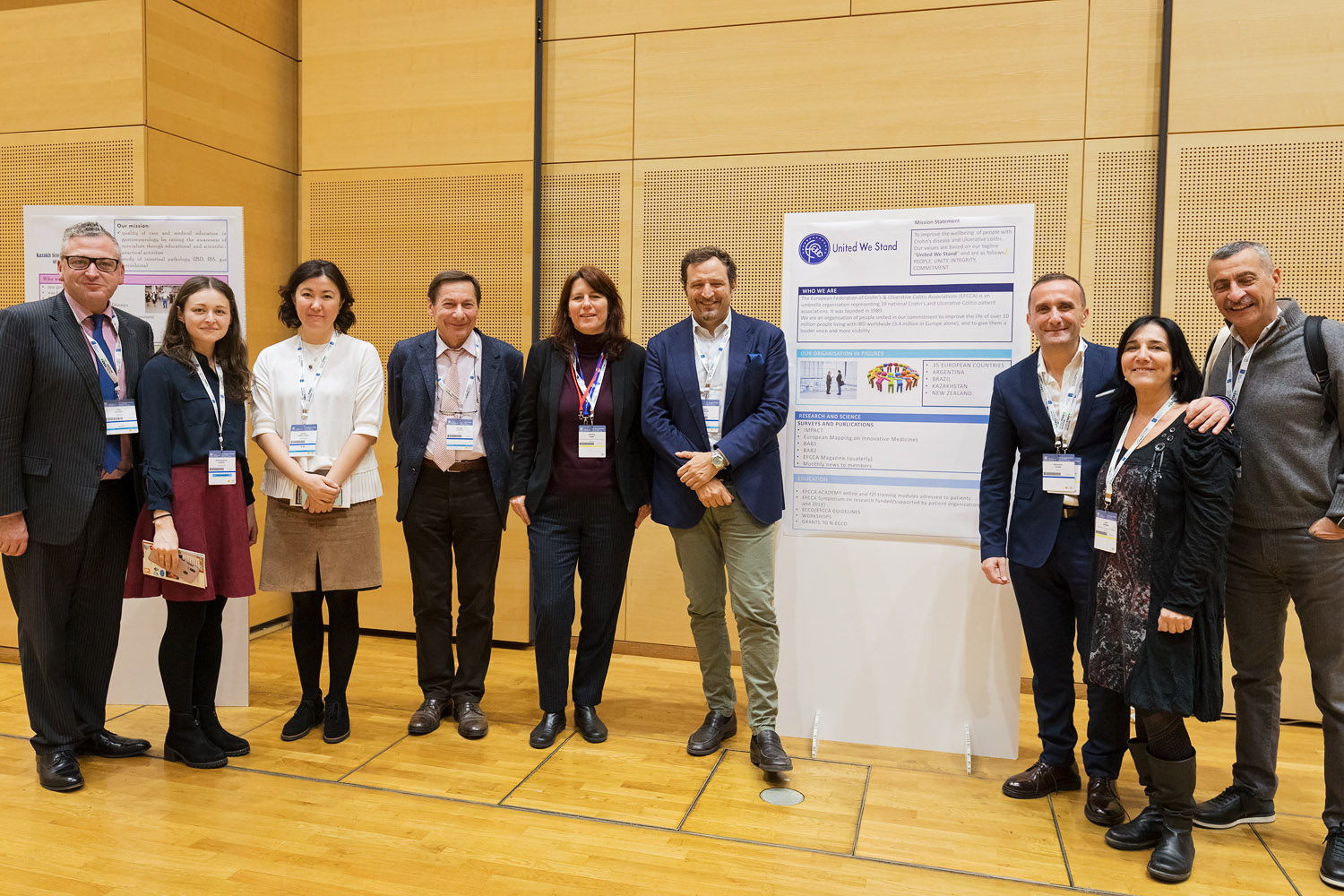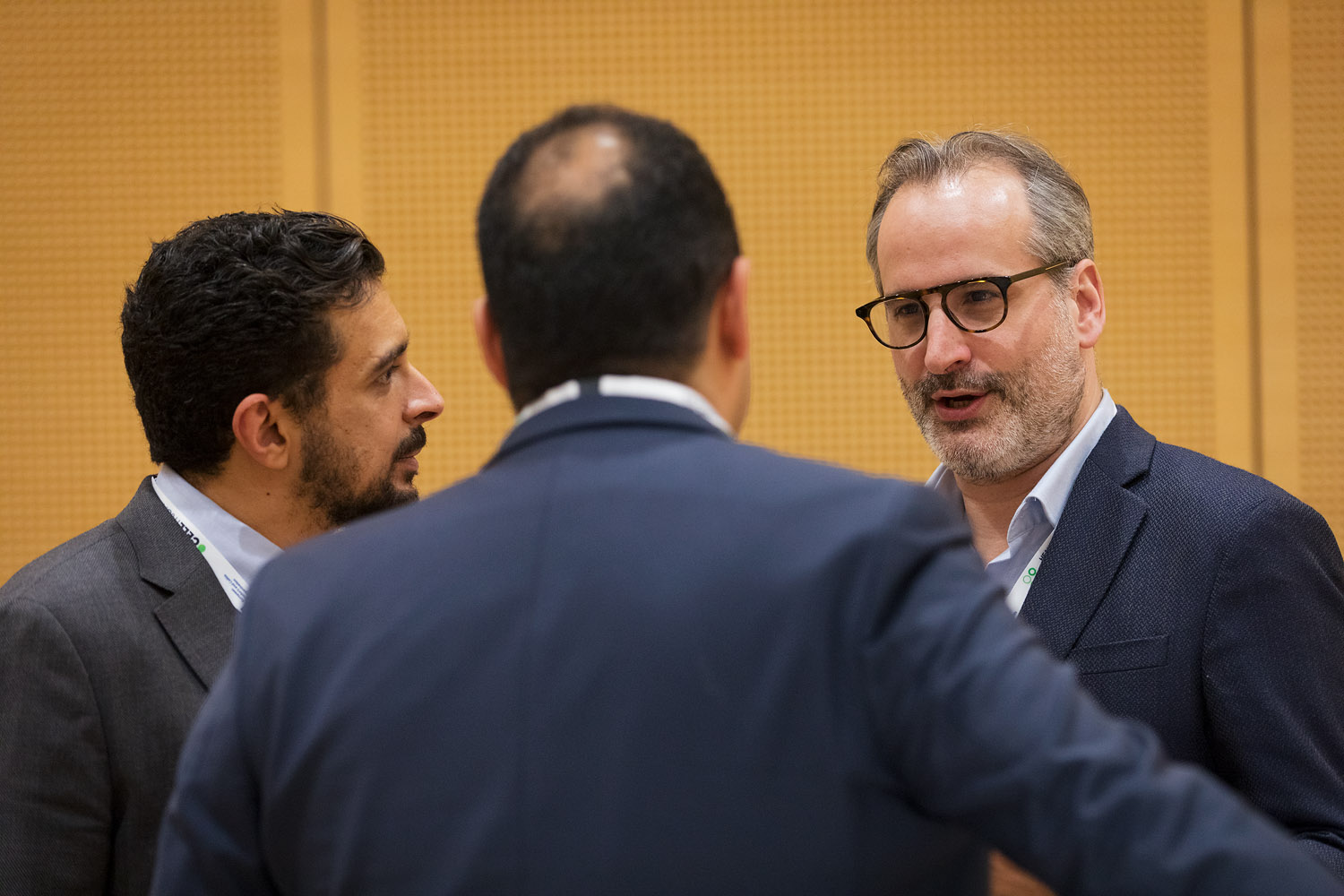ECCO News Editors’ Summary of ECCO’20 DOPs and Talking Global IBD
Ignacio Catalán-Serra and Nuha Yassin, ECCO News Associate Editors
 Ignacio Catalán-Serra © Ignacio Catalán-Serra |
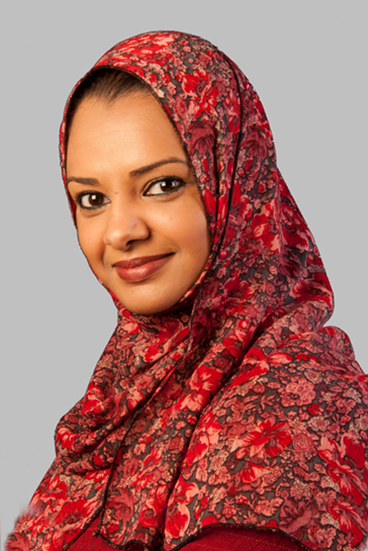 Nuha Yassin © ECCO |
Dear ECCO friends,
We hope you are all well and are keeping safe in the current climate.
It was great to see so many friends at the 15th ECCO congress in Vienna, which was a great success. We have a series of updates for you including a synopsis of the winning digital oral presentations, an introduction to the “Talking Global IBD” ECCO initiative and an introduction to the new ECCO App. Please get in touch via the ECCO Office if you’d like to see/read specific content in the next series of eNewsletters.
Best Wishes
Nuha Yassin
Ignacio Catalan-Serra
ECCO News Associate Editors
Talking Global IBD at ECCO’20
To spread our areas of collaboration and partnership with different IBD societies and associations around the globe is a key strategic objective of ECCO for the coming years.
Over the past decade, ECCO has built up strong ties with Global Friends via abundant initiatives. In this context, ECCO introduced a new category for reinforced partnership with established national and international organisations in the field of IBD. Furthermore, now societies outside of the ECCO Country Membership circle can also apply and become ECCO Affiliate Member Societies.
As a get together all newly welcomed affiliate members were cordially invited to attend the Talking Global IBD event. The Talking Global event took place prior to the General Assembly at the ECCO Congress 2020 in Vienna. This brand-new initiative was met by all associations with great excitement. Associations and societies with focus on IBD from all over the world were welcomed to interact in an informal atmosphere with food and drinks.
Among the represented were Egypt, Taiwan, Argentina, the patient society EFCCA, Brazil, Africa, Japan, Kazakhstan and the United Arabic Emirates.
All of participating societies were asked to prepare a poster for the meeting, presenting their mission, who they are and their main focus of research and activities.
On the other hand, we would like to remind you that ECCO is offering to its Affiliate members are hosting an ECCO Educational Workshop in their country, best aligned to a National Gastroenterology meeting, participation in the Talking Global IBD initiative at the ECCO Congress (attached to General Assembly) as well as the possibility to write a profile of their society for ECCO News.
In addition to the abovementioned, an extremely valuable opportunity for the affiliate ECCO societies is also the possibility to Nominate a candidate for IBD Intensive Advanced Course: 20 outside-of-Europe seats available (first come, first served) via open call to Global Friends and published on ECCO Website every spring.
Talking Global IBD was a great opportunity to share the challenges and experiences of different IBD dedicated gastroenterologists, surgeons and nurses from very different geographical, social and cultural areas. To explore new avenues for collaboration in research, educational and clinical activities will enrich ECCO and its new partner associations and societies. Together we are better, more plural, tolerant and creative and from ECCO we are happy that we started this exciting project for the benefit of the IBD community around the world.
Browse through the gallery:
Ignacio Catalan-Serra
ECCO News Associate Editor
Nuha Yassin
ECCO News Associate Editor
Pictures are subject to copyright © ECCO
Summary of top 10 DOPs
The winners of the Top 10 DOP awards are
DOP04: Matching between donors and patients in fecal microbiota transplantation is important for long-term maintenance on Ulcerative Colitis
Dai Ishikawa, Tokyo, Japan
In this follow up study, Ishikawa et al. presented the short -and long-term efficacy of a triple antibiotic treatment followed by fecal microbiota transplantation (FMT) in patients with ulcerative colitis (UC).
In a previous study, the authors showed the efficacy of using amoxicillin, fosfomycin, and metronidazole for 2 weeks before FMT via colonoscopy. This beneficial effect was attributed to changes in phylum Bacteroidetes.
Using spouses and relatives as donors of a total of 80 UC patients, the investigators demonstrated a higher clinical response and remission rate in the antibiotic pre-treated group vs the FMT alone group (65.9% vs 56.2% and 40.4% vs 18.7%, respectively); with a higher maintenance of the clinical effect defined as no exacerbation of Lichtiger´s clinical activity index and no intensification of treatments at 12 and 24 months (p=0.046).
In addition, the researchers studied the importance of matching between donors and patients, showing a lower maintenance rate when the age difference between them was more than 11 years and in parent-child relationship vs siblings’ relationships.
This study showed the efficacy of antibiotic treatment previous to FMT in the long-term and offers some interesting clues on donor selection for FMT treatment in UC patients.
DOP13: Clinical and endoscopic response to ustekinumab in Crohn's Disease: Week 16 interim analysis of the STARDUST trial
Silvio Danese, Milan, Italy
Danese et al. presented the week 16 interim analysis of the STARDUST trial, an ongoing phase 3b randomised trial studying the efficacy of Ustekinumab (an anti- IL12/23 drug) in moderate–severely active CD patients who failed conventional therapy ±1 biologic. Patients received intravenous, weight-based UST of ~6mg/kg at week 0 and subcutaneous UST 90mg at week 8.
Intention-to-treat [ITT] key endpoints for a total set of 500 patients were analysed at week 16, showing high clinical response and clinical remission rates (79.4% and 66.6, respectively). In addition, half of the patients showed ≥50% improvement in CD biomarkers like FCal and CRP levels. Interestingly, results were similar irrespective of previous biologic exposure.
Treat-to-target (T2T) strategy has proven to be effective in CD treatment. The investigators presented the endoscopic results of a T2T set (n=220) at W16. Almost 37% and 11.4% of this subset of patients achieved endoscopic response and remission, respectively. The endoscopic response was better for colonic vs. ileal disease and no new safety issues were reported.
This target-to treat approach trial showed the benefit of a more proactive approach in CD patients treated with ustekinumab.
DOP04: Matching between donors and patients in fecal microbiota transplantation is important for long-term maintenance on Ulcerative Colitis
Bruce E. Sands, New York, United States
The prevalence IBD in the elderly (including both new diagnosis and longstanding disease) is still growing and has become a relevant issue in clinical practice. This study by Barnes et al. sheds light on the medication use and characteristics of elderly (>65 years) IBD patients in the United States.
In total, 681 patients from the TARGET-IBD cohort with UC and 979 patients with CD were included in the analysis and stratified by age.
Mesalamine was the most common medication used among patients with CD >65 years (34%) at enrollment. Furthermore, elderly CD patients were more than twice as likely to be users of mesalamine than young patients (<30 years. Mesalamine was also the most common medication used in UC across all age categories the investigators reported an increase in the use of mesalamine with advancing age as well.
While thiopurine use did not change across age subgroups, there was a decrease in the use of anti-TNF in elderly IBD patients (both UC and CD). The investigators analysed the predictors of biologic use at enrollment among elderly, showing no association between age, type of IBD, insurance, gender, race or cardiovascular disease with biologic use. Interestingly, the use of a 5-ASA derivative, anti-TNF, steroid, or thiopurine did not differ by established and newly diagnosed patients among the elderly at enrolment.
This study describes the characteristics and medication use of a large cohort of elderly IBD patients and highlights the need for specific studies of efficacy and safety in this growing population.
DOP34: Transplantation of human intestine into the mouse: A novel platform for study of inflammatory enterocutaneous fistulas
Michael Scharl, Zurich, Switzerland
A significant subgroup of CD patients suffer from fistulizing disease. However, it is difficult to study enteric fistulas in vivo, since they do not develop in the current animal models of colitis.
To address that, Bruckner et al. presented the results of a study where they performed transplantation of the human foetal gut into SCID mice as a novel platform for studying inflammatory enterocutaneous fistulas.
The authors studied the inflammatory response elicited by lipopolysaccharide (LPS) in fully developed human gut xenografts and used immunostaining to analyse those grafts that spontaneously developed entero-cutaneous fistulas.
The investigators found a broad number of resident human innate and adaptive immune cells in gut xenografts with an elevated expression of inflammatory cytokines in response to LPS (IL-1β, IL-6,IL-8, TNF-α, A20, and IkBα) with no change in IL-10 gene expression.
In total, 17% of fully developed subcutaneous human gut xenografts spontaneously developed enterocutaneous fistulas that were histologically similar to CD fistulas, showing lymphocytic enteritis with a significant expansion of resident human CD4+ T cells. In addition, mucosal epithelial cells assumed mesenchymal morphology and formed fistulous tracts towards chronic wounds in the host mouse skin.
This novel platform for study of inflammatory enterocutaneous fistulas by transplantation of human foetal gut into mice can enable a more systematic study of this complication in live animal models, helping our understanding of the pathophysiology of fistulizing disease in CD.
DOP41: Low grade dysplasia prognosis and predictive factors for advanced neoplasia progression in the 21st century - A large multi-centre retrospective cohort study
Misha Kabir, London, United Kingdom
Low grade dysplasia (LGD) is an increasingly detected feature in the endoscopic surveillance of ulcerative colitis patients. However, studies on the prognosis and the actual progression rates of LGD are needed.
To address that, Kabir et al. performed a large retrospective cohort study involving four UK IBD centres. Adult patients with UC who had their first LGD diagnosis between 2001-2018 with at least one colonoscopy or colectomy were included. The study endpoint was time to high-grade dysplasia (HGD) or cancer (CRC), i.e. advanced neoplasia (AN), or end of follow-up.
In total, 460 patients were followed up for a median of 4.1 years with a mean of 3.7 subsequent colonoscopies. Of note, complete endoscopic resection was achieved in 94%of the polypoid LGD and 64% of the non-polypoid LGD.
The progression rate to AN was 19% (n=88) during follow-up, with no significant difference in AN progression between centres. The authors showed that the use of chromoendoscopy was protective against AN progression while the presence of an unresectable non-polypoid or invisible LGD carried the greatest risk of AN during follow-up. A subsequent multivariate analysis showed that lesion size of 1 cm or more, invisibility, multifocality and unresectability of LGD were significant risk factors for progression to AN as well. In addition, the investigators reported a low five-year cumulative incidence of AN after complete endoscopic resection of visible LGD without surrounding dysplasia.
This is the largest study addressing LGD progression rates to AN in recent years and provides essential information to guide the decisions on follow-up schedules and patient information regarding management of LGD in UC surveillance.
DOP50: The landscape of somatic mutations in non-neoplastic IBD-affected colon
Carl Anderson, Cambridge, United Kingdom
This study from Cambridge investigated how the recurrent cycles of inflammation, ulceration and regeneration seen in IBD impact the mutational and clonal structure of intestinal epithelia. The background to this, being our knowledge of normal physiological colonic crypt mutations, and changes to these in conditions such as cancer, but our relative lack of knowledge regarding how somatic mutations are affected by IBD.
The group of researchers isolated and whole-genome sequenced ~400 individual colonic crypts from 46 IBD patients and compared these to ~400 crypts from 41 non-IBD controls. They compared the mutation burden, mutational signature exposure, clonal structure and cancer driver mutation landscape in crypts from actively and previously inflamed regions with crypts dissected from controls.
Acceleration of mutational processes was observed in the normal colon not in IBD. In Clonal expansions outside the confines of the crypt are rare in the normal colon. The study group observed widespread millimetre-scale clonal expansions, even in the absence of mutations in KRAS, TP53 and APC.
Mutations in ARID1A, PIGR and ZC3H12A, and genes in the interleukin 17 and Toll-like receptor pathways, were under positive selection in colonic crypts from IBD patients. With the exception of ARID1A, these genes and pathways have not been previously associated with cancer risk. The observed enrichment of mutations in PIGR and IL17 and TLR pathways suggests that somatic mutations may initiate, maintain or perpetuate IBD pathogenesis through disruption of microbe-epithelial homeostasis.
These results provide new insights into the consequences of chronic intestinal inflammation on the mutational profile and clonal structure of colonic epithelia. Exploring these findings of somatic mutations in the colon may reveal putative drug targets and pathogenic mechanisms for IBD.
DOP58: Tofacitinib for Ulcerative Colitis: Results of the ICC Registry, a nationwide prospective observational cohort study
Jasmijn Sleutjes, Rotterdam, The Netherlands
Tofacitinib is a janus kinase 1 and 3 inhibitor which is one oft he newest drugs being used for the treatment of ulcerative colitis (UC). Sleutjes et al, from Rotterdam in the Netherlands evaluated Tofacitinib’s efficacy in their study.
Patients with UC in whom tofacitinib was started in 15 hospitals (8 academic, 7 non-academic) were included. The data were collected through the ICC Registry:
Dutch prospective, observational IBD registry. Visits were planned at baseline, Week 12, and 24. Patients with both clinical (Short Clinical Colitis Activity Index (SCCAI) >2) and objective disease activity (endoscopy (Mayo >0), C-reactive protein (CRP) >5 mg/l or faecal calprotectin (FCP) >250 µg/g) were included.
One-hundred and eleven UC patients were included (95% anti-TNF, 60% vedolizumab, 4% ustekinumab exposed) and followed-up for a median of 24 weeks (IQR 12–26). All patients had both active clinical and objective disease. Corticosteroid-free clinical, biochemical, and combined corticosteroid-free clinical and biochemical remission rates at week 24 waere 29%, 25%, and 19%, respectively. Endoscopic remission was achieved in 21% of patients at Week 12.
Prior vedolizumab exposure was associated with a lower remission rate at week 24 In total, 36 patients (88 per 100 patient-years) experienced Tofacitinib-related adverse events, the most common being cutaneous lesions and headache. Six patients (18 per 100 patient-years) discontinued treatment. Four cases of herpes zoster re-activation were noted, but no severe infections. During follow-up 14 hospitalisations and 5 (4.5%) colectomies were performed. At week 24, 33% of patients used 10 mg twice daily.
The study group concluded that Tofacitinib is an effective treatment for UC after anti-TNF and/or vedolizumab failure. A relatively high rate of adverse events were observed in this refractory cohort of UC patients.
DOP70: High dimensional analysis reveals a novel signature for IL-17 producing CD8 T cells in Inflammatory Bowel Disease
Peter Hasselblatt, Freiburg, Germany
The pathogenesis of IBD has previously mainly been associated with a dysregulation of CD4 T-cell responses, and active disease is linked to induction of pathogenic IL-17 producing T helper cells. Importantly, CD8 T cells can also produce IL-17 and demonstrate a significant increase in active IBD. However, it remains unclear whether this is due to conventional or unconventional T-cell responses and whether these CD8 responses could play a role as novel biomarkers or therapeutic targets of active IBD.
Hasselblatt et al, and the study group from Freiburg in Germany, isolated lymphocytes from the peripheral blood and intestinal tissue of IBD patients (n = 56) and performed a detailed analysis of CD8 T-cell phenotype and function using high-parametric flow cytometry and mass cytometry in combination with algorithm-aided bioinformatic analysis.
A significant increase in IL-17 production was obsereved by CD8 T cells in active IBD, primarily produced by conventional CD8 T cells. Unconventional T-cell subsets (e.g. MAIT cells, γδ T cells and NKT cells) represented only ~30% (peripheral blood) or ~25% (intestinal tissue) of IL-17 producing CD8 T cells (Tc17).
Tc17 cells were indentified as a distinct cell population within the intestinal CD8 T-cell compartment that can be further subdivided into 3 subsets which share expression of phenotypic markers such as CD6, CD39, CD69 and PD1 and a low expression of CD27. This was validated in a separate cohort of IBD patients. IL-17 was associated with flare-free survival at initial IBD diagnosis. in a retrospective cohort analysis based on published transcriptome data.
These findings may help guide treatment decisions for specific IL-17 CD8 biomarker and immunotherapeutic targets.
DOP70: High dimensional analysis reveals a novel signature for IL-17 producing CD8 T cells in Inflammatory Bowel Disease
Hadrien Alric, Paris, France
This study from Alric et al, France studied the effectivness and safety of ustekinumab and vedolizumab for patients with Crohn’s disease refractory to anti-TNF therapy.
This was a multi-centre study from 5 university hospitals. All consecutive patients with active CD who were refractory to at least one anti-TNF, and were treated either with vedolizumab or ustekinumab were included. The study period was between May 2014 and August 2018. The primary endpoint was clinical remission rate at week 48.
Two-hundred and thirty-nine patients were included, 107 received Ustekinumab and 132 received Vedolizumab. After propensity scoring, there was no difference between the two groups. At week 48, the clinical remission rate was higher with Ustekinumab than with Vedolizumab and corticosteroid-free remission rate were higher with Ustekinumab than with Vedolizumab. Treatment persistence was significantly more frequent in the Ustekinumab group (71.5% vs. 49.7%; OR = 2.54, 95% CI [1.40–4.62]). The dose optimisation rate at week 48 was higher with Vedolizumab than with Ustekinumab (53.5% vs. 30.1%; OR = 0.37, 95% Cl [0.21–0.67]).
Subgroup analyses showed that Ustekinumab was associated with higher clinical remission rates at week 48 in patients with ileal CD (OR = 3.49; 95% CI [1.33–9.17]), a penetrating phenotype (OR = 6.58; 95% CI [1.91–22.68]) and a history of perianal disease (OR = 2.48; 95% CI [1.04–5.93]). Regardless of treatment group, comboination therapy was associated with a higher clinical remission rate at week 48 (OR = 1.93; 95% CI [1.09–3.43]).
This study suggests that, after 1 year of follow-up, Ustekinumab is associated with a higher rate of clinical remission than Vedolizumab in CD patients refractory to anti-TNF, particularly in those with ileal and penetrating disease.
DOP80: Effectiveness of ustekinumab and vedolizumab in patients with Crohn's Disease refractory to anti-tumor necrosis factor: A multi-center comparative study
Hadrien Alric, Paris, France
This study from Alric et al, France studied the effectivness and safety of ustekinumab and vedolizumab for patients with Crohn’s disease refractory to anti-TNF therapy.
This was a multi-centre study from 5 university hospitals. All consecutive patients with active CD who were refractory to at least one anti-TNF, and were treated either with vedolizumab or ustekinumab were included. The study period was between May 2014 and August 2018. The primary endpoint was clinical remission rate at week 48.
Two-hundred and thirty-nine patients were included, 107 received Ustekinumab and 132 received Vedolizumab. After propensity scoring, there was no difference between the two groups. At week 48, the clinical remission rate was higher with Ustekinumab than with Vedolizumab and corticosteroid-free remission rate were higher with Ustekinumab than with Vedolizumab. Treatment persistence was significantly more frequent in the Ustekinumab group (71.5% vs. 49.7%; OR = 2.54, 95% CI [1.40–4.62]). The dose optimisation rate at week 48 was higher with Vedolizumab than with Ustekinumab (53.5% vs. 30.1%; OR = 0.37, 95% Cl [0.21–0.67]).
Subgroup analyses showed that Ustekinumab was associated with higher clinical remission rates at week 48 in patients with ileal CD (OR = 3.49; 95% CI [1.33–9.17]), a penetrating phenotype (OR = 6.58; 95% CI [1.91–22.68]) and a history of perianal disease (OR = 2.48; 95% CI [1.04–5.93]). Regardless of treatment group, comboination therapy was associated with a higher clinical remission rate at week 48 (OR = 1.93; 95% CI [1.09–3.43]).
This study suggests that, after 1 year of follow-up, Ustekinumab is associated with a higher rate of clinical remission than Vedolizumab in CD patients refractory to anti-TNF, particularly in those with ileal and penetrating disease.
DOP89: Pre-treatment muscosal inflammatory and wound healing gene programs reveal mechanisms associated with future stricturing behavior during five year follow-up in Pediatric Crohn's Disease
Yael Haberman Ziv, Ramat Gan, Israel
The final winning DOP was from the study group in Ramat Gan, Israel. It is well-known that stricturing complications account for substantial morbidity in Crohn’s disease (CD), and are difficult to treat. The study group aimed to define ileal gene programmes present at diagnosis in paediatric CD associated with future stricturing behaviour (B2), and to identify potential small molecules to reverse these gene signatures. This was a 5-year inception cohort study which included 249 patients with CD.
Antimicrobial serologies and ileal gene expression (RNASeq) were assessed at diagnosis. The data were used to define genes associated with stricturing behaviour and for model testing to predict stricturing. Sirius Red immuno-histochemistry was utilised to determine the extent of collagen infiltration into the sub-cryptal space. A bioinformatics approach defined small molecules which may reverse the stricturing gene signature.
Of 249 (8%) patients, 19 developed B2 behaviour during the 5-year follow-up, while 218 remained B1 inflammatory.
The study group defined 518 genes that were differentially expressed in the ileum at diagnosis (FC≥1.5, FDR<0.05) in B1 patients who later developed B2 stricturing complications vs. those who remained B1 throughout. These were notable for baseline up-regulation of OSM implicated in anti-TNF non-response, NCF2 and CSF3R implicated in myeloid cell activation, TGFBI implicated in tissue fibrosis, and a panel of 17 collagen genes in patients who progressed to stricturing.
The group concluded that an ileal gene program for macrophage and fibroblast activation appears to be linked to future stricturing complications in treatment naïve paediatric CD. These findings may inform small-molecule therapeutic approaches. Details of the findings can be found by clicking on the above link to watch the full presentation.
Ignacio Catalan-Serra
ECCO News Associate Editor
Nuha Yassin
ECCO News Associate Editor



